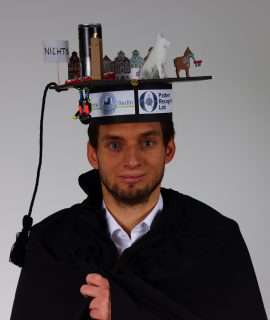Christian Marzahl
Deep Learning-based Cell Detection in Microscopy Images
In recent years, classical pathology has been in a constant state of change towards digital pathology. Digitisation forms the basis for supporting the work of pathologists in many ways by utilising computer-assisted methods. Among other things, modern methods of pattern recognition can accelerate previously time-consuming quantitative analyses, support reporting, and thus standardise and improve the results of pathological examinations. Digitalisation also offers new possibilities and ways of interdisciplinary cooperation and coordination between experts at an international level. This work presents novel methods and software that can be used to support both the analysis of image data and the cooperation between users. For these purposes, species-independent cell detection methods are developed and analysed, allowing the automatic quantification of pulmonary haemorrhage and asthma on cytological image data. The basis for developing these methods is qualitatively, and quantitatively comprehensive data sets created online and interdisciplinary with the annotation tool EXACT developed in this thesis. For cell detection, an established deep learning-based method of object recognition is optimised regarding resource consumption and training pipeline to meet the specific requirements of pathological problems such as image size and unbalanced annotation distribution. Employing the developed detection methods, algorithmically, pre-labelled images can be presented to the annotators for verification and thus, can efficiently increase existing data sets in quantity and quality. In this context, the thesis also investigates whether humans adopt algorithmic errors. The generalisation of algorithms across species and scanner boundaries is of great scientific and economic interest. Therefore, as an initial step for this dissertation, a dataset with human, feline and horse cell samples on the question of pulmonary haemorrhage is created which is the first of its kind in terms of both the number of annotated cells and the number of species. A registration method is developed in a second step that abstracts the pyramid representation of pathological images using a quadtree. In contrast to established methods, this approach does not require pre-segmentation or images with lower resolution and is the only one that can be applied natively to images with cytological questions. The findings and algorithms from the developments and studies described in this thesis are incorporated into the realisation of the online annotation tool EXACT in close cooperation with interdisciplinary experts. In contrast to established tools, EXACT places its focus on the traceability of annotation creation and various visualisation techniques to increase the quality of annotations. The presented methods for object recognition achieve accuracy that is comparable to the one achieved by human expert while at the same time increase the efficiency and reproducibility of grading cytological images. Thus, these methods form the basis for creating and publishing qualitatively and quantitatively comprehensive multi-species datasets using the annotation tool developed in this thesis. While the routine use of the developed algorithms still requires extensive cross-institutional studies that independently prove the added value of these procedures, the online annotation tool EXACT is already successfully used in several companies and research projects for the creation and registration of a broad range of datasets.
